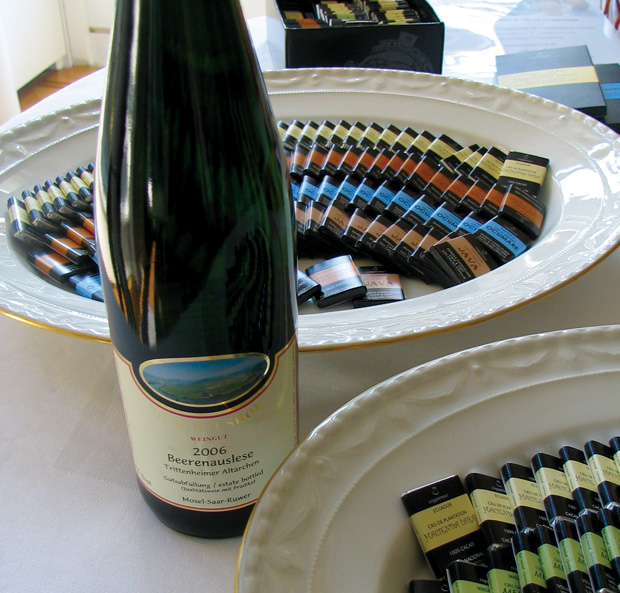Chocolate seems most abundant after the holidays, and with Valentine’s looming, it’s a good time to focus on matching it with wine.
In general, chocolate can be broadly divided into four categories, in part designated by the cacao content (i.e., the percentage of bean from which the chocolate is made): white chocolate, which has no cacao (and, as such, is not regarded as real chocolate); milk chocolate; semi-sweet chocolate (50-70 percent cacao); and bitter sweet chocolate (71-100 percent cacao).
White chocolate, because of it rich buttery character, could be matched with an Olosoro cream sherry. For a lower octane match, a Moscato de Piedmonte or a demi sec Champagne should work equally well, while the sparkle will contribute an extra tactile dimension.
Milk chocolate, containing a small amount of cacao, is the sweetest of the real chocolates. As a result, it typically needs a wine with an equal amount of sweetness. As with the white chocolate, make sure to avoid dry wines as they will inevitably taste dry and harsh. In this case, the broad recommendation would be for dessert wines, something with a high residual sugar. As a general rule, for milk chocolate, the key words to look for on the matching wine are “late harvest” or “botrytis”. Alternatively, fortified wines are another pleasant option — try a tawny port or a Baynlus.
With semi-sweet chocolate there is more scope for matching because the aftertaste is less sweet. A safe match would be ruby port. Though a fruity full-bodied cabernet from a warm climate could work, you would need to know your chocolate.
It is the final category that has the most potential for the wine aficionado. Bitter chocolate typically tends to have just enough sweetness to cover the inherent bitterness, making it the perfect foil to match with a range of dry wines. It is in this category that the fruity exuberance of a wine can come to the fore and marry with the chocolate. Here raspberry and cherry flavors can intermingle with the intense flavors of the chocolate to create a real synergy. As one would expect, you need full-bodied wines, such as a California Zinfandel or a powerful Australian Shiraz to achieve the desired effect.
Finally, if you are not sure about your wines and chocolates, the safe bet is to go with a brandy such as Cognac or Armagnac, VSOP level. The high alcohol content will cut through the butterfat, cleansing the palate, while the chocolate will enhance the flavors of the spirit, making it more palatable for the sensitive. With Feb. 14 in mind, remember the old adage, “Candy is dandy, but liquor is quicker”! (J.K. Whelehan)









